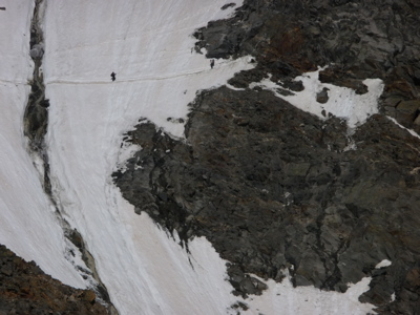Adventurers and explorers come in many forms and guises. The ones that first come to mind, of course, are the physical trailblazers: Admiral Byrd, Lewis and Clark, Edmund Hillary, and all the other daredevils who pushed toward the ends of the earth and the air and space beyond.
But exploration … and the obsession that sometimes accompanies, or at least often enables, that kind of successful quest … isn’t limited to geographical challenges. For exploration is a matter of going beyond what is known; stepping out into the void beyond that in the hopes of bringing back new knowledge about what lies there. And no matter what that territory is, exploring it is always fraught with danger of one kind or another, because any unknown world is full of unexpected and unpredictable surprises. It comes with the territory, so to speak. And it takes a highly motivated individual to persevere in the face of all the unpredictable challenges and setbacks the process entails.
I found myself thinking about the various types of exploration, and the amount of dedication/obsession that’s required to succeed in a bold, exploratory quest, as I leafed through Bill Streever’s new book, Cold: Adventures in the World’s Frozen Places.
At first glance, it seemed like it might be a memoir of an Arctic explorer. And it is, in a way. But not of the physical arctic. It’s about the exploration of the conceptual arctic land known, in the scientific world, as “Frigor”—the strange and challenging realm of frozen spaces, elements, and phenomena.
Scientific inquiry might not seem as exciting or dangerous as physical exploration, but that’s not actually true. At one point, Streever talks about how one experiment on the road to discovering how to freeze carbon dioxide (thus creating dry ice) cost a lab assistant both legs. And that’s just one of many examples. But what struck me most, in reading the various stories, was the passion these scientists had for pushing the limits of knowledge and capability just a little further outward.
The explorers of Frigor are every bit as excited about the possibility of creating a temperature of absolute zero (the coldest temperature physically possible, which is 0 degrees Kelvin, -273 Centigrade, or about -460 Fahrenheit) as any mountain climber is about reaching the peak of Everest. Given that molecules stop moving at absolute zero, it does seem like it would be a cool event to witness. But getting there involves a process every bit as frustrating and discouraging as any and every other explorer’s quest. And so the people willing and able to push through those frustrations and discouragements are not your average nine-to-fivers. They are passionate to the point of obsessed … both with the goal, and with the excitement of the journey toward it.
I, myself, find it hard to imagine being so turned on by the idea of all things cold. I spent four years living in Minnesota, and that was enough for me. So reading about the exploits of these sub-zero zealots, I felt a little bit like an anthropologist observing a strange, mysterious and utterly foreign culture. But there’s also something contagious about passion, no matter where you find it, and regardless of what it’s for. Which is to say, I also found myself more fascinated by the stories, discoveries and challenges of these passionate laboratory explorers than I’d ever have imagined possible.
I still don’t have an answer for where the motivation for taking on that kind of challenging quest comes from, or where the line between passion and obsession lies. But clearly, it’s a question that winds its way through many fields and endeavors. Indeed, perhaps it winds its way through them all. Even those concerned with a point in the universe where there is no movement at all.
Next post: Amelia, Revisited
Previous post: Necessity Entrepreneurs






Furthest North Volumes I and II by Nansen prepares you for South Pole by Admunsen.